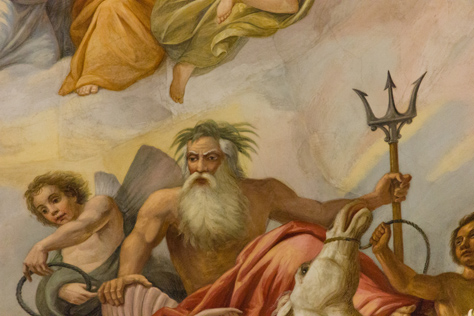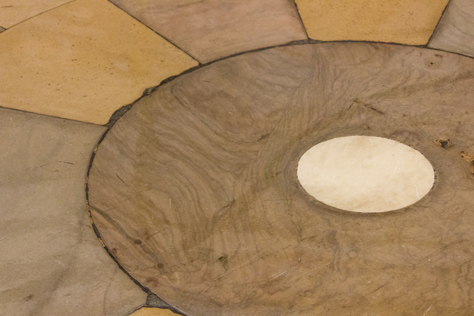
Roman god of freshwater and the sea Neptune in the Marine scene of Constantino Brumidi's fresco 'The Apotheosis of Washington' (1865) on the dome of the United States Capitol (1811/1866) from the center of the rotunda floor.
First Street SE, Washington, District of Columbia: 01 February 2014
part of the United States Capitol album
After the developers of Gallery 3 — the software I was using to host my photographs — decided to walk away from the project in June, I knew that I needed figure out a new solution. For better or worse, a subsequent technical issue encouraged me to find that solution more quickly than I had first planned.
There were fewer options available than I had expected, no doubt as many people now use third-party hosted services for their photography. I decided to look at Coppermine, Piwigo, Zenphoto and WordPress as potential alternatives.
WordPress ![]()
Piwigo ![]()
Coppermine ![]()
Zenphoto ![]()
Designing how the theme would look was the easy part; I already had a model to go off in the form of my Gallery 3 theme. The basic look would remain the same but improvements would be made and annoyances fixed. With these details in mind and the user guide in hand, I got to work.
At first, the structure of things seemed awkward and I did not understand several design choices. The process of learning the core functions and coding the theme completely changed my initial impressions, however. I discovered that theme development for Zenphoto was actually easier and its structure more intuitive.
Implementing specific features was mostly accomplished using available plugins, although I did modify a few of them as well as write several custom functions. In addition, I had to update three core extension files to force the interactive map to use HTTPS and two other core files for other reasons.
Within a few days, I was uploading previously published photographs and tweaking the theme as I went. That process was completed earlier this week and I have but a few minor items remaining on the checklist.
Conclusion
Even though outside circumstances necessitated the change, I think that the Mount Sutro Gallery is better than before running on Zenphoto. Not only does my custom theme look and function as desired, but I completed it ahead of schedule due in part to Zenphoto's logical architecture.I am pleased to be able to get back to processing and publishing photographs, not to mention slowly continuing work on the original migration project.







